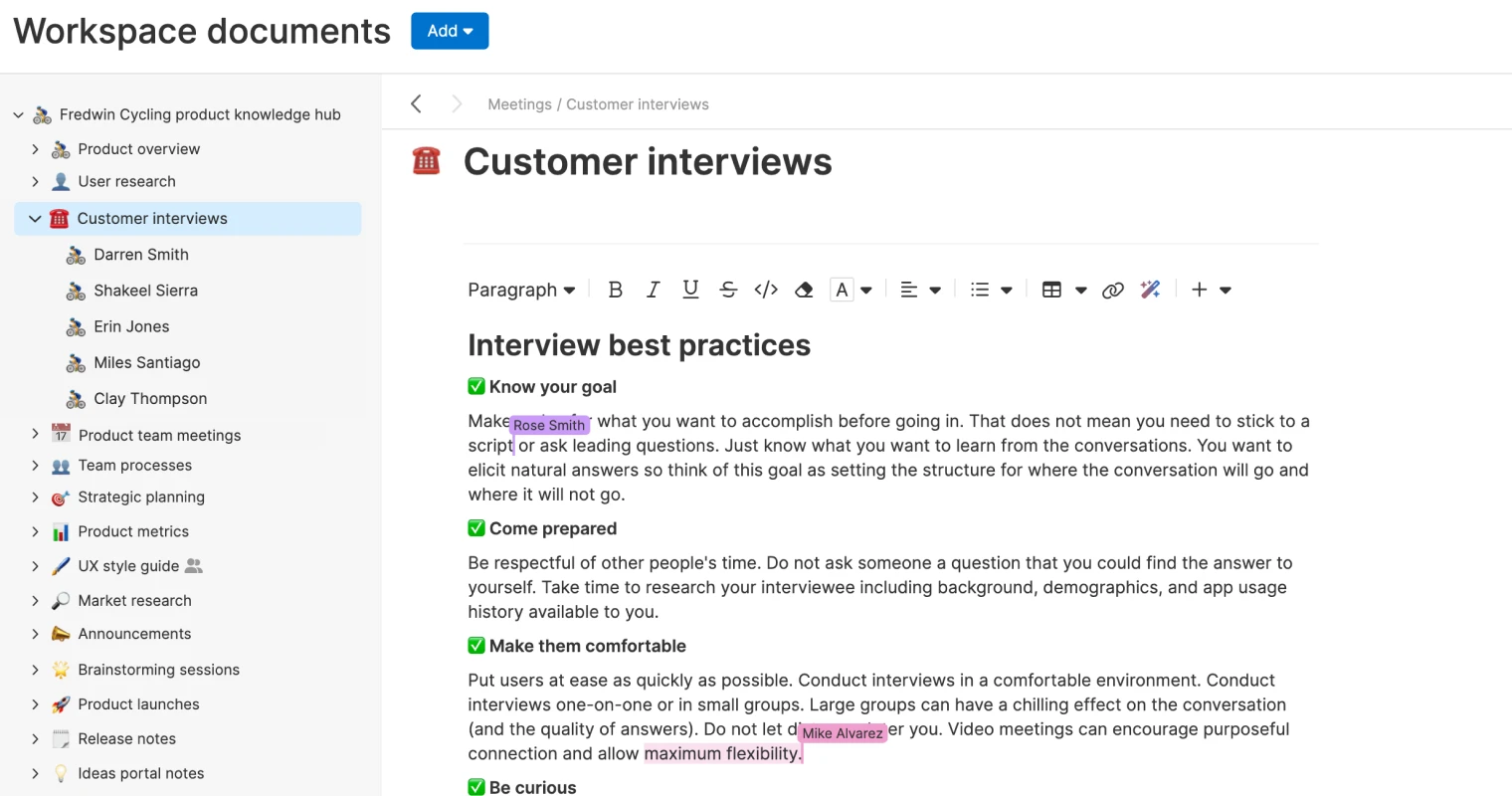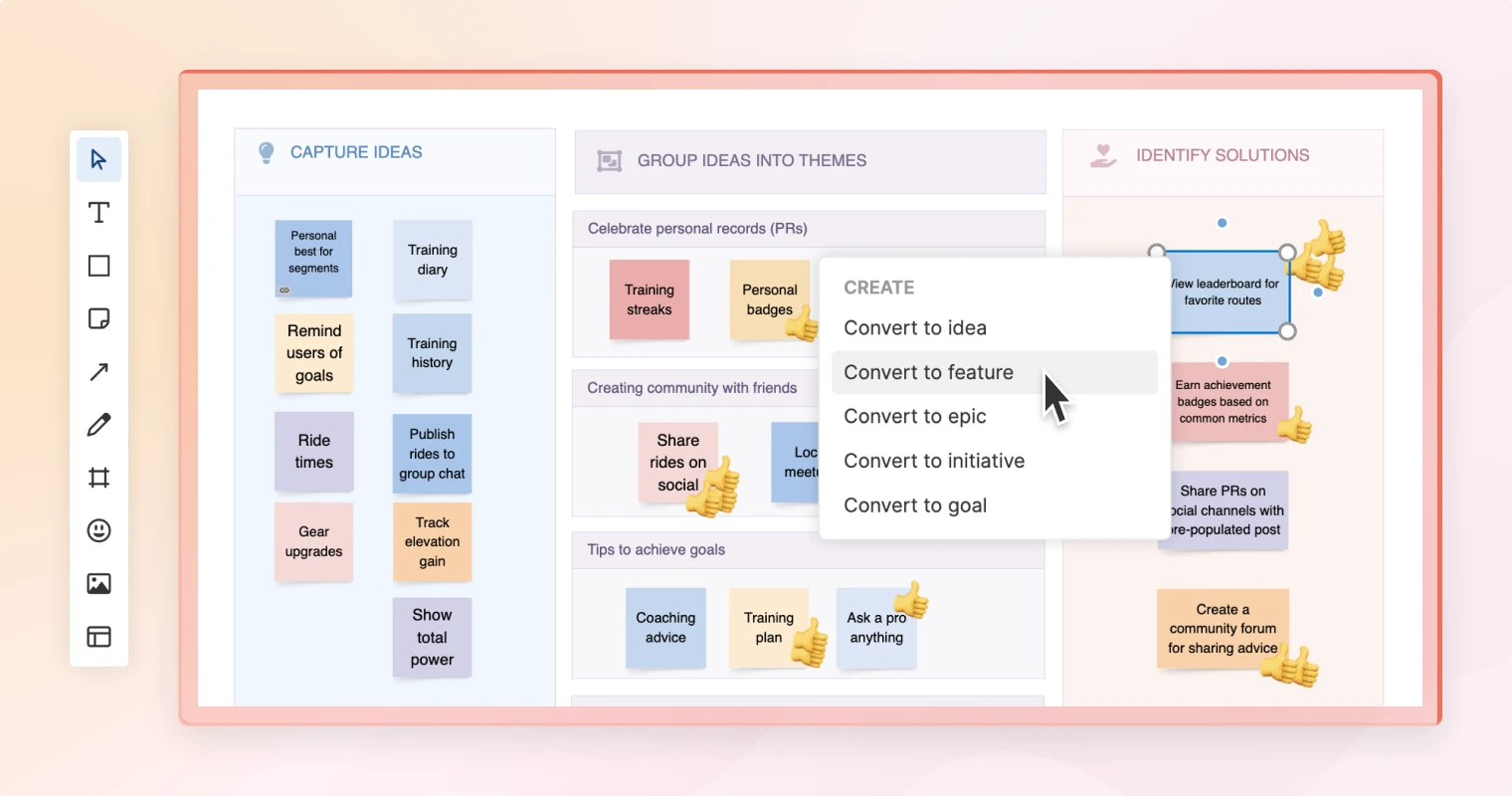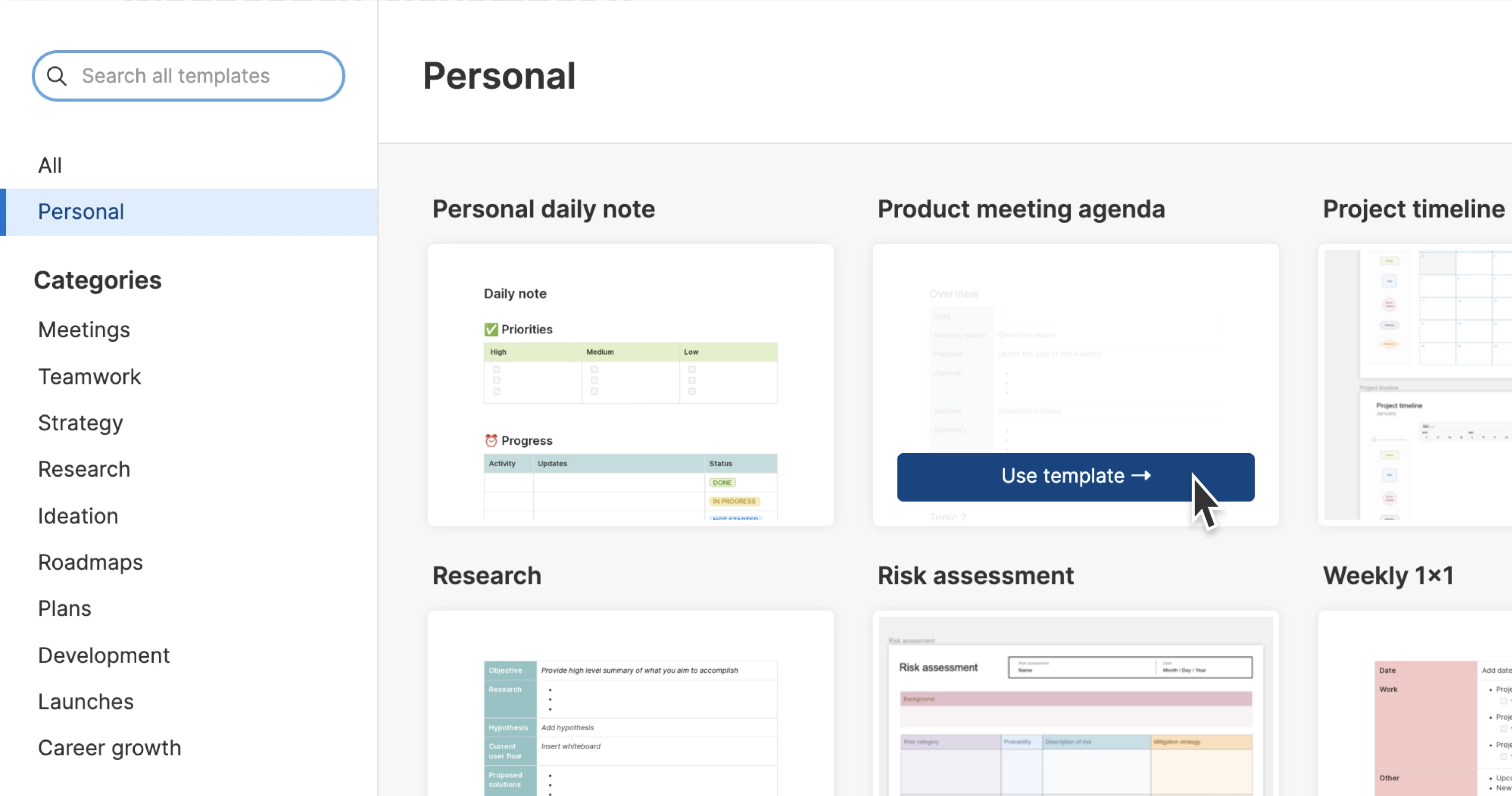
Internal documentation boosts collaboration and productivity through streamlined information access.
How to keep internal product documentation fresh
Editor's note: Aha! Notebooks has been split into Aha! Knowledge and Aha! Whiteboards.
Product documentation. Perhaps not the most glamorous topic, but it is essential to product development success. Simply put, you and your stakeholders need to be able to find the right information when you need it. Yet every week, our team at Aha! speaks to product builders who are struggling with disorganized or outdated team resources. This is why we have been writing a lot recently about our approach to internal product documentation — how we create it, organize it, and share it.
High-achieving product teams make it a priority to organize all the information they need in a single place.
We are referring to what we call a central hub for product documentation. Think of it as a repository for everything your team and other stakeholders need access to in order to deliver value to customers and the business. This typically includes things such as foundational product documents, industry best practices, team processes, documents for capturing knowledge, and training docs for new hires.
Sounds straightforward enough. But many organizations and product leaders do not yet prioritize internal docs. When you are zoomed in on the daily work of building and delivering products, it can be difficult to carve out time for crafting a playbook on how you build them. Information goes unwritten or stays scattered across various tools and formats.
As a result, the team can suffer — no one has a true shared understanding of your approach to product development. People are confused about who makes certain decisions, who influences those decisions, and who is really accountable for results. As cross-functional siloes emerge, different groups might engage in "busy" or duplicative work that does not actually deliver value. And launches of new products or functionality can quickly devolve into disorder.
If this sounds familiar, you are not alone. Our team at Aha! is fortunate in this regard — we use our own software to centralize documentation. We maintain notes and whiteboards in Aha! Notebooks, covering everything from best practices to team meeting agendas. We also capture how we make decisions as a company and how we collaborate. In our experience, doing this aligns the team so we can achieve more (and smoothly). Plus, it encourages all of us to think deeply about the work we do and the parts we play in the Complete Product Experience.
The lead up to a new year is a good time to evaluate what is working or not and come up with a plan to improve. As we gear up for 2024, here is our advice on refreshing your product documentation — so you can focus more on achieving (and be happy doing it).
Evaluate
Audit the resources your team currently has. Start by determining where core documents are located and which groups or contributors have access to them (or not). Then, look closer at each doc: What information is good or helpful, what is outdated, and what is missing? Capture your findings in a note or guided template (such as a mind map or concept map).
Inquire
Product documentation is often about capturing team processes and cross-functional workflows. So ask core product team members and other relevant stakeholders what documents they use and when. Find out which docs they need, but do not have access to. You should also determine what types of information they would like added to a central knowledge hub.
Categorize
Establish a simple hierarchy. Think through a logical order for core product documentation and how to best organize it for your team. Consider the purpose, audience, and contributors for each doc. For example, put high-level foundational information — such as product overviews and customer research — in a top or parent folder where everyone can easily find it.
Standardize
Consistency minimizes distraction and encourages shared understanding. Suggest a simple editorial style guide for the team to follow when creating new docs or updating existing ones. For example, the guide might include entries on your preferred formatting, style, and tone conventions. And if your team has documentation in different tools, import that information into a single tool.
Schedule
Some product docs are evergreen, but others require periodic updates. Commit to a schedule for when you or your colleagues will review and refresh different types of documents. Keeping docs up to date will inspire the team to continue using them and trust that the information is accurate. When team members refer to a doc and see that something is outdated, they are more likely to feel empowered to fix it in the moment.
Consolidating product documentation helps the entire team feel more invested in the value you are building together.
As a product manager, you might not have the power or authority to dictate the exact content within the team's repository. But you do have the ability to help create a beautiful hub where your teammates actually want to go and contribute information to. And when everyone has the resources they need, you can all focus on what matters most in the year ahead — building the most lovable product possible.
All your internal product documentation — ideas, notes, whiteboards — in one place. Try Aha! Notebooks free for 30 days.




